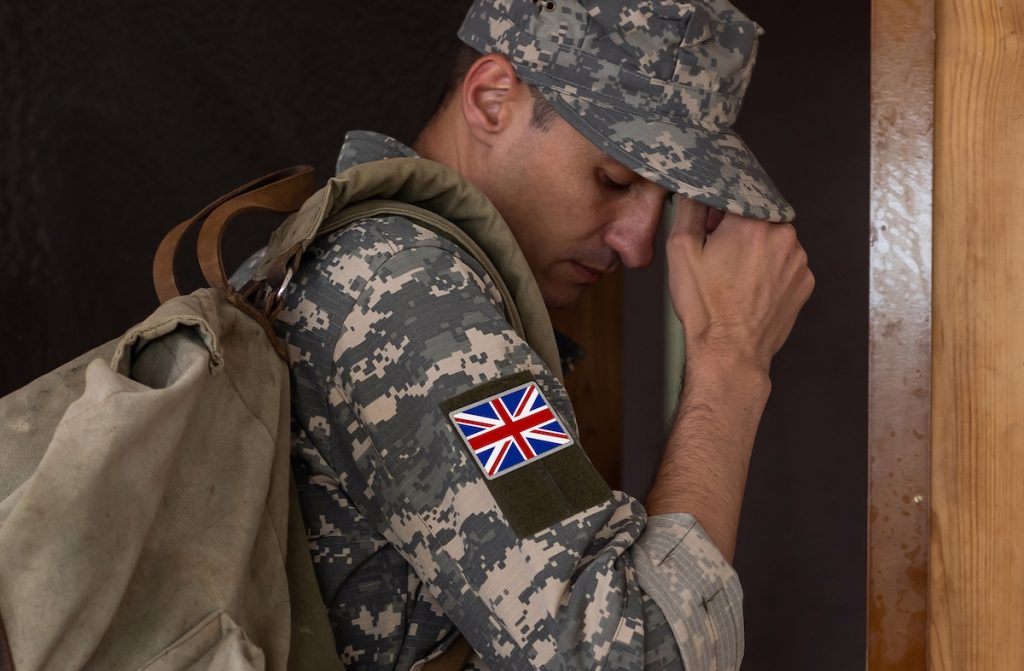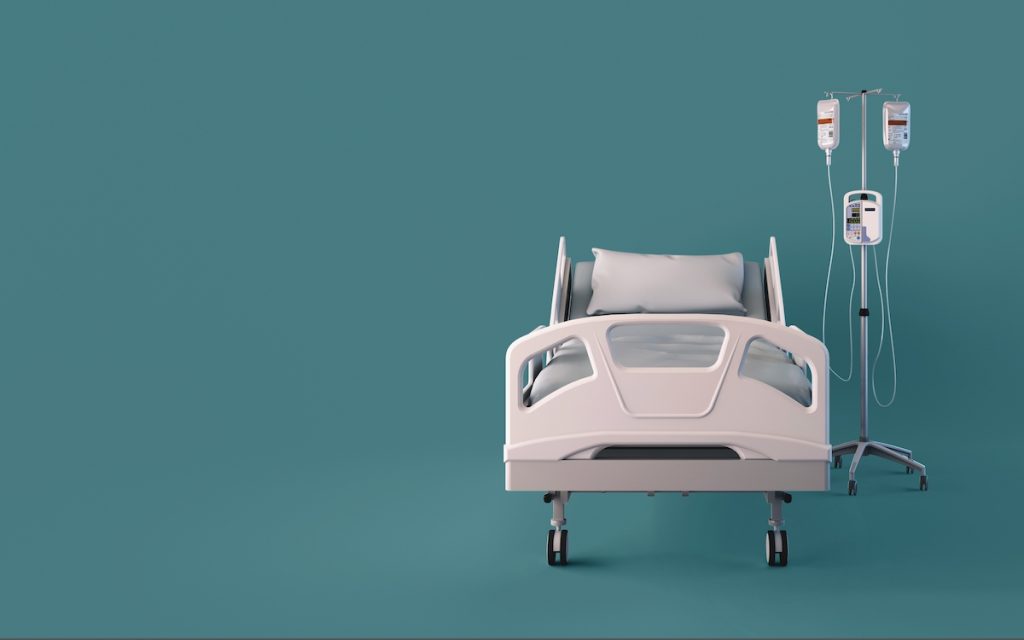
Accidents happen more frequently among the military population than among civilians (Ministry of Defence, 2014; 2018). For instance, military personnel are at a higher risk of death due to experiencing land transport accidents and other accidents compared to the general population (Defence Statistics, 2015; Ministry of Defence, 2017).
Research suggests that some groups of military personnel are at a higher risk of experiencing accidental death, including those with anxiety, post-traumatic stress disorder (PTSD) (Lewandowski-Romps et al., 2018), those who engage in risky behaviours (Chui et al., 2023), and those who misuse drugs/alcohol whilst dealing with trauma (Shipherd et al., 2005; Bray et al., 2008). However, previous studies have not explored the prevalence of accidents that do not result in death among the UK military population. This limits our understanding of whether military personnel are at increased risk of having an accident, or whether they are actually at increased risk of death post-accident.
This current study (Chui et al., 2023) addresses these gaps, and investigates the association between 1) mental health issues, alcohol misuse, and smoking 2) health behaviours, and 3) hospital admissions for accidents and injuries in a representative sample group of UK military cohort of serving and ex-serving personnel.

What is the relationship between mental health problems, alcohol and tobacco use, and hospitalisations for accidents and injuries in military personnel?
Methods
A UK military cohort study was linked with electronic secondary healthcare records for hospital admissions in England, Wales, and Scotland. The study measured exposures during phase 2 of the cohort study (2007-2009) and outcomes were reported in records from November 2007 to September 2009 until March 2014.
The following information from the Military Health Research (KCMHR) cohort during Phase 1 (2004-2006) and Phase 2 (2007-2009) was collected:
- Demographic (age, relationship status, and education)
- Pre-military (family relationship adversity in childhood)
- Military (e.g., rank)
- Mental health problems (e.g., PTSD symptoms)
- Health behaviours (alcohol use)
- Admissions to hospitals for accidents and injuries and accident and emergency (A&E) attendance from electronic healthcare records (EHRs): NHS Digital (three datasets) containing details of all NHS secondary care in England, Scotland and Wales. Clinical diagnoses were coded using the International Classification of Diseases, 10th revision (ICD-10). The number of A&E attendances (after phase 2 of the cohort study) was counted per individual.
A total of 8,602 participants were granted access to their medical records. The analysis sample only included hospital admissions or A&E attendances which took place after the exposure variables were collected during Phase 2 of the cohort study. Logistic regression was used to analyse the association between being hospitalised due to an accident or injury and self-reported mental health issues, alcohol abuse, and smoking. Cox proportional-hazards regressions were then used to examine the associations between mental health problems, alcohol misuse, and smoking with the time taken for hospital admission due to an accident or injury. Lastly, negative binomial regressions evaluated the connections between mental health issues, alcohol abuse, and smoking with the number of visits to A&E.
The models were adjusted for demographics and military characteristics, family relationship adversity and health behaviours (e.g., alcohol misuse). Depending on the analysis, either odds ratio (OR) (risk factors associated with having an admission to hospital for an accident/injury) or Incidence Rate Ratio (IRR) (risk factors associated with subsequent attendances to A&E) were reported. Survival analysis was used for the analysis of risk factors associated with time to admission to hospital for the five most common accidents and injuries, and the hazard ratio (HR) was reported.
Results
Frequencies of accidents and injuries. Accidents and injuries were calculated as weighted proportions with 95% confidence intervals. Among the top ten accidents and injuries, complications of medical and surgical care were the most frequent (n = 96, weighted proportion = 1.19, 0.92-1.47 (95%CI)), while exposure to animate mechanical forces (n = 10, weighted proportion = 0.16, 0.06-0.25 (95%CI)) was the least common. Other examples included transport accidents, overexertion, assaults, accidental exposure to unspecified factors, intentional self-harm, sequalae of external causes of morbidity and mortality, exposure to inanimate mechanical forces, and falls.
Risk factors of admission to hospital at phase 2. The majority of participants who did not face any hospital admissions did not have a common mental health disorder or probable PTSD (79.9%) but experienced alcohol misuse (56.2%), and binge drinking monthly or less (61.7%). This trend remained consistent among those who had at least one hospital admission. For instance, 72.5% did not experience any common mental health disorder or probable PTSD, but 61.4% reported alcohol misuse.
Prevalence of accidents and injuries. In this sample, medical and surgical care complications were the most common reason (weighted proportion = 1.19, 0.92 to 1.47 (95% CI)) for hospital admission, followed by falls (weighted proportion = 0.88, 0.63 to 1.12 (95% CI)), and exposure to mechanical forces weighted proportion = 0.74, 0.51 to 0.97 (95% CI)).
Demographic/military characteristics of those admitted for the five most common accidents and injuries. The average age of the participants was about 35 years (M = 35.30, SD = 9.4). Most participants were in a relationship (79.1%), had completed at least A-level education (55.3%), and were currently serving (71.3%). Over two thirds (64.4%) of the participants reported experiencing 0-1 family relationship adversity factors in their childhood. Nearly half of the sample had been deployed to Iraq or Afghanistan (45.2%). Additionally, most participants had issues with binge drinking monthly or less (61.6%), and were current or ex-smokers (51.3%) but did not have a common mental health disorder or probable PTSD (79.5%).
Participants who experienced family relationship problems during their childhood were more likely to be admitted to medical and surgical care for complications, whereas those who had served in a combat role and those who reported binge drinking were more likely to be admitted for sequelae of external causes of morbidity and mortality. Ex-serving personnel with mental health problems and smoking habits had a higher likelihood of being admitted for intentional self-harm than serving personnel, non-smokers, or those without mental health issues.
Risk factors associated with having an inpatient admission to hospital for accidents and injuries. Participants with mental health issues had a 1.5 times higher chance of being admitted to the hospital for accidents and injuries compared to those without such problems. However, alcohol misuse, binge drinking, and smoking were not found to be significantly linked to hospital admissions for accidents and injuries.
Risk factors for time to admission to hospital for accidents and injuries. Alcohol misuse and binge drinking increase the risk of hospital admission for morbidity and mortality from sequelae of external causes by over 2.5 times. However, when demographic and military characteristics were included in the model, these effects become insignificant. Participants who reported experiencing mental health issues and were currently smoking had a higher risk of being admitted to the hospital for intentional self-harm. Specifically, they were 2.7 and 2.5 times more likely to be admitted compared to those without mental health problems and non-smokers, respectively. These differences became non-significant once demographic and military characteristics were taken into account.
Risk factors associated with the number of attendances to A&E. The median number of A&E attendances ranged from 1-3 for all risk factors (common MH disorder or probable PTSD, alcohol misuse, binge drinking, and smoking status). Participants with mental health issues, smokers/former smokers, and those who misuse alcohol tend to have more emergency department visits. In the adjusted model, mental health problems increased the likelihood of more visits by 1.3 times, smoking by 1.2 times, and alcohol misuse by 1.3 times. However, the association with alcohol misuse weakened after controlling for demographic and military characteristics.

Alcohol misuse and binge drinking were found to increase the risk of hospital admission for morbidity and mortality from external causes.
Conclusions
To date, this is one of the first studies to the authors’ knowledge to investigate the relationship between mental health problems and other health behaviours with hospital admissions for accidents and injuries that do not result in death among military service or ex-service personnel. The results suggest that military personnel who smoke or have mental health problems are at greater risk of having an accident or injury compared to those without these issues.

The study found that accidents and injuries sustained by military personnel are not entirely random occurrences and are often linked to factors such as poor mental health.
Strengths and limitations
Strengths of this study include its sample size (N>8,000), and the broad range of measures considering the risk of admissions for accidents and injuries among the UK military personnel. In addition, reputable and reliable data sources were used to establish strong data linkage. However, some measures had a low number of cells (e.g., only 8 participants had experienced an exposure to inanimate mechanical factors, who were in reserve rather than regular service), which could have resulted in unreliable estimates due to a lack of power. In addition, complete case analysis was conducted, which may be limiting with small cell counts.
The authors also acknowledged that it was sometimes difficult to draw conclusions between different intersections on an individual basis due to the lack of details provided by hospital admission data (e.g., relationship between poor MH, smoking, and risk of having an accident or an injury). Current research is primarily focused on military individuals at high risk of suicide (Chui et al., 2023) in relation to mortality and mental health disorders. However, it is important to shift the focus to all military personnel experiencing any level of mental health issues, highlighting the significance of early support. While the current study sheds some light on the intricate connection between mental health, alcohol misuse, smoking, and hospitalisation due to accidents and injuries, further research is needed to investigate the causal relationship between different mental health disorders and unintentional deaths among military personnel.

We need to better understand the relationships between alcohol misuse and hospital admission for morbidity and mortality from external causes.
Implications for practice
The current paper further highlights that military personnel with mental health issues, or those who smoke, are at greater risk of hospital admissions due to injuries or accidents. There is an urgent need to create tailored interventions that can prevent accidents in military personnel. Clinicians should focus on developing strategies specifically designed for those dealing with mental health issues or those who engage in smoking and/or alcohol misuse. Interventions should address the unique challenges and stressors associated with military life, providing targeted support to mitigate the risk of accidents and injuries. In addition, clinicians should advocate for regular mental health assessments as part of standard healthcare protocols. Early identification of mental health concerns allows for timely intervention, preventing the escalation of issues that may contribute to accidents or injuries.
Implementing integrated mental health programs within military settings could help clinicians collaborate with military institutions to establish comprehensive mental health initiatives. These initiatives can address existing mental health issues and promote mental well-being as a preventive measure. Such programs could include regular check-ups, stress management workshops, and confidential counselling services. A holistic healthcare approach could encourage military personnel to seek help if they are experiencing mental health issues or any other welfare needs. Clinicians can work with interdisciplinary teams to ensure that military personnel receive comprehensive care covering mental health, smoking cessation, and overall physical health.

Professionals can play a pivotal role in disseminating information about the risks associated with mental health issues and smoking in military personnel.
Statement of interests
No conflicts of interest to declare.
Links
Primary paper
Other references
Photo credits
- Photo by Christian Lue on Unsplash
- Photo by Andres Siimon on Unsplash
